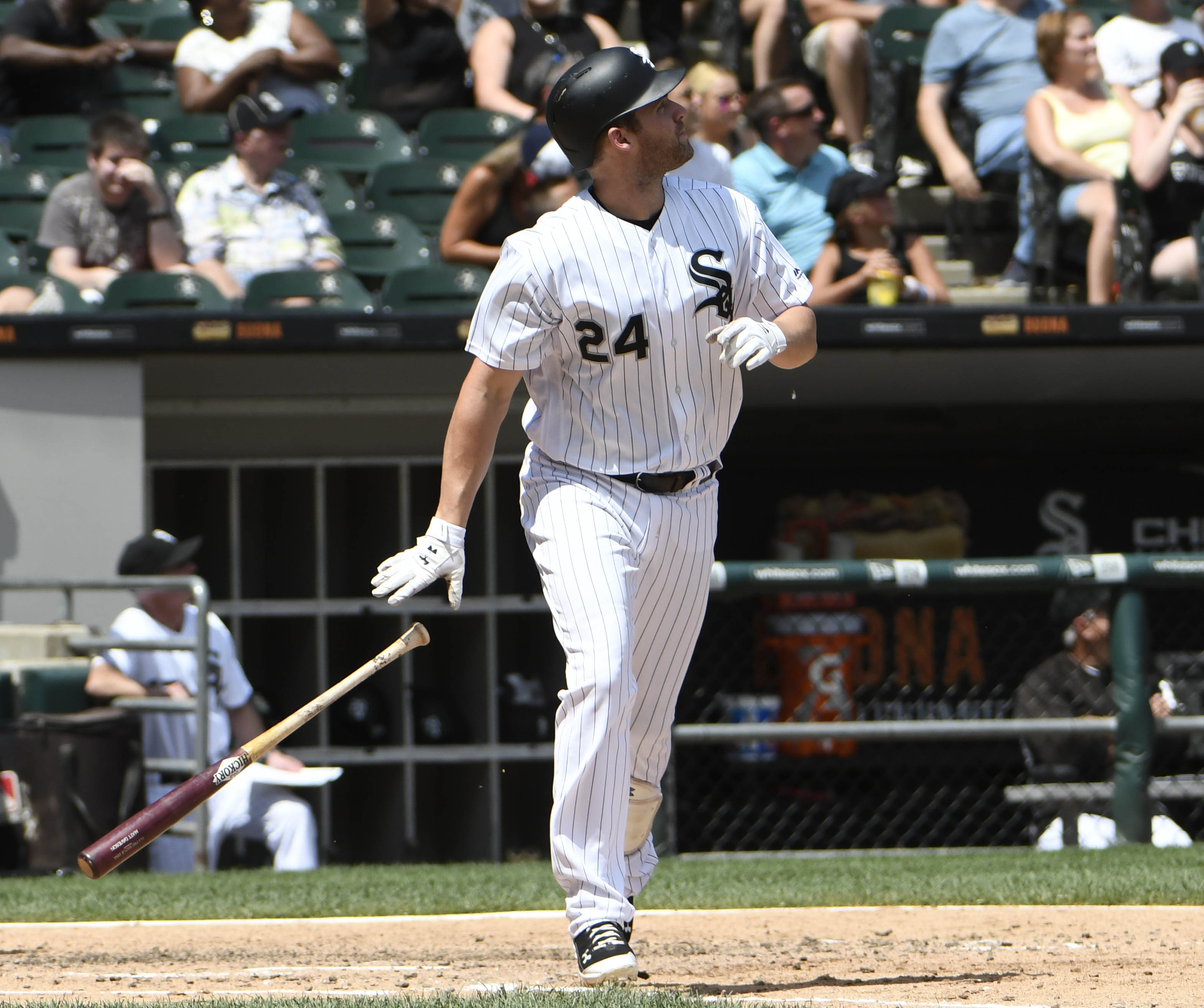Matt Davidson‘s career has been atypical after beginning in a very unremarkable way. He was a supplemental first round pick out of high school and fell into what our prospect team might call a readily identifiable bucket–good bat for third, middling bat for first base, questions about where his glove would fit. As is often the case with players of this profile, he sat comfortably in the back half of Top 100 lists for almost every major prospecting outfit as he worked his way through the minors, and even had a successful cup of coffee with Arizona in 2013.
He would then be traded for Addison Reed–whose career has also had its ups and downs–and then he just…stagnated in Triple-A, repeating the level three times before getting a call up, only to break his foot in his White Sox debut. We learned even more about Davidson’s efforts to rebuild his swing and approach, and you can hear more about that on our podcast with Dave Brown, and he is very thoughtful and open about what he’s thinking about while he’s at the plate.
And here we are in mid-June and his atypical career continues. His K% is still hovering just below 40, which is basically between Keon Broxton and Chris Davis at the very top of the majors, and he slumped somewhat significantly in May, to the tune of .241/.284/.458. Given his profound contact issues, a month like that following his strong April potentially indicated that the league had figured out how to pitch him and he would settle in as a Chris Carter type who could play a little bit of third base.
And while that may ultimately be Davidson’s fate, he is not going quietly into the night, as June has seen him return to his pre-May levels of obscene power and just enough batting average to keep his OBP within shouting distance of league average. In his 41 June plate appearances, he still is striking out like mad (16 times), but he’s still slugging .658 because when he does hit the ball he absolutely annihilates it. He’s currently tied with Ryan Zimmerman and virtually tied with Aaron Judge among the league leaders in least soft contact made, and of the 101 balls he has put in play, Davidson has hit 36 of them at speeds greater than 95 mph.
Given that Davidson is mashing the ball when he does make contact, it stands to reason that he’s still an effective player, especially in a platoon where he avoids being exposed by righties. If he can retain an ISO over .250 for about 400 plate appearances (a full season for the big half of a platoon, for example), there may not be any reason to be worried if his average dips closer to .200. Retaining that ISO, however, is the problem at hand. Sure, the exit velocity has looked good, but we can’t really say whether that will stick around or not. Most concerning is the 65% contact rate. At that rate, it’s all or nothing every time his bat touches the ball. Currently he’s getting a lot of the good outcomes, doubles and home runs. It’s possible that some of those doubles and home runs could turn into groundouts and pop-ups, turning Davidson from above average hitter to roster filler on a rebuilding team.
The current state of affairs does not seem sustainable, unless you expect him to continue as some sort of mini-Miguel Sano without the walks. Davidson’s raw power is clearly legit, and he has demonstrated that he can access it in games. He has also demonstrated an ability to persist through significant and lengthy stretches of failure. But unless and until he gets his strikeouts under control, this is going to be a very high risk, albeit entertaining, style of play. Whether he can do it without sacrificing his power remains to be seen.
Lead photo credit: David Banks-USA TODAY Sports

3 comments on “The Matt Davidson Experience”
Comments are closed.